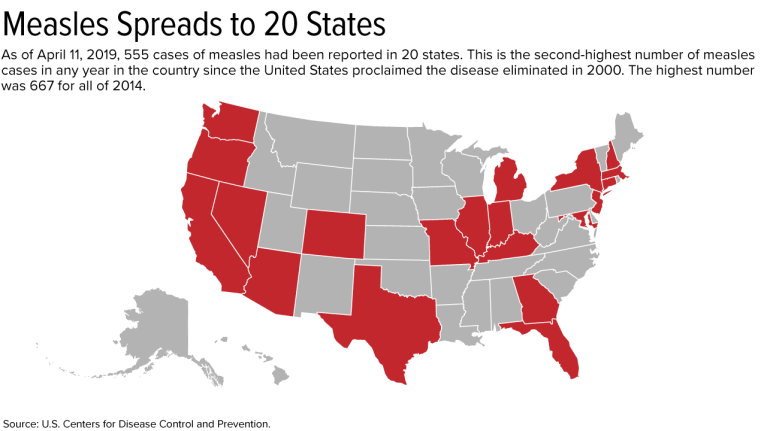10 Quick Tips for Avoiding Distractions at Work
The number of notifications that the average employee gets interrupted by each day is between 50 and 60. With more than half of the interruptions being unimportant, these distractions are reducing the productivity rate of their work. Read this blog for tips on how to avoid distractions at work.
In a world of push notifications, email, instant messaging, and shrinking office space, we’re becoming increasingly distracted at work. The average employee is getting interrupted 50 to 60 times per day, and about 80% of these interruptions are unimportant. As a result, people are spending little time in what psychologists call “the flow state,” a space where people are up to five times more productive, according to research from McKinsey.
The constant distractions are not only leaving people less productive, but also more stressed than ever, with a lack of control over one’s work being cited as a major contributor to workplace stress, according to the American Institute of Stress. So, how do we avoid distractions in the office in order to take control of our days, do our best work, and improve our emotional well-being?
1. Practice Asynchronous Communication
When you get an email, it’s actually OK to think: “I’ll get to this when it suits me.”
Aside from the benefit of giving people more time for uninterrupted focus, asynchronous communication predisposes people to better decision-making by increasing the amount of time we have to respond to a request. When you’re on a phone call or video chat, you’re making real-time decisions, whereas if you’re communicating via email, you have more time to think about your response.
In order to practice this successfully, we must do away with the arbitrary “urgency” that still plagues workplaces the world over, almost a century after Dwight D. Eisenhower, who, quoting Dr. J. Roscoe Miller, president of Northwestern University, said: “I have two kinds of problems: the urgent and the important. The urgent are not important, and the important are never urgent.” This “Eisenhower Principle” is said to be how the former president prioritized his own workload.
To optimize an asynchronous message and to avoid a lot of follow-up emails, include the following in your initial request:
- Sufficient details
- Clear action item(s)
- A due date
- A path of recourse if the recipient is unable to meet your requirements
2. Batch Check Everything
“Just quickly checking” anything, even for one-tenth of a second, can add up to a 40% productivity loss over the course of a day, and it can take us 23 minutes to get back into the zone after task switching.
Rather than sporadically checking things throughout the day, we should batch check email, instant messages, social media, and even text messages, at predetermined times.
If you struggle with self-control, tools like Gmail’s Inbox Pause plugin enable you to pause your inbox once you’ve checked it and only unpause it when you’re ready. Blocksite and the Freedom app also allow you to block access to specific websites and apps during specified intervals.
3. Do Not Disturb
If you’re reading this and thinking: “But I work in an open-plan office, and it’s impossible to avoid interruptions,” try using a signaling mechanism to let your team know that you’re in the zone (or trying to get there) and that they shouldn’t disturb you unless it’s legitimately urgent. This could be as simple as a pair of headphones.
4. Avoid Calendar Tetris
In today’s workplace, it’s a widely accepted norm that others can book time in your calendar, usually at the expense of your own priorities.
Basecamp CEO, Jason Fried, told me on an episode of the Future Squared podcast that at Basecamp, you can’t book time in someone’s calendar without first getting buy-in. This means that most meetings just don’t happen because the would-be meeting organizer usually opts for a phone call or an instant message instead.
Alternatively, consider blocking out meeting-free zones on your calendar, or using a meeting scheduling tool such as Calendly so that people book meetings with you only during scheduled windows, leaving the rest of the day free for focus, and ensuring that you avoid the email tennis matches that scheduling meetings often degenerates into.
5. Close the Loop on Meetings
Instead of risking follow-up interruptions and a meeting to discuss the previous meeting, ensure that you leave each meeting with actionable next steps, clearly assigned responsibilities, and due dates.
6. Stop Using “Reply All”
Reply All, used as a mechanism to share accountability, only adds unnecessary chatter to people’s inboxes and headspace. Take more ownership over your decisions and only email people who need to be informed.
7. Use Third Spaces
As Sue Shellenbarger wrote for The Wall Street Journal, “All of this social engineering (open-plan offices) has created endless distractions that draw employees’ eyes away from their own screens. Visual noise, the activity or movement around the edges of an employee’s field of vision, can erode concentration and disrupt analytical thinking or creativity.”
If you’re struggling with open-plan offices, then try to incorporate more third-space work into your day for critical thinking; try to find a quiet space in the office, a serviced office, or negotiate some time to work from home.
8. Turn off Push Notifications
The average executive receives 46 push notifications per day. To avoid our Pavlovian impulses to respond on cue, simply turn off your push notifications. Find out how here.
9. Use Airplane Mode
You can also use airplane mode to limit text message and phone call interruptions during certain times of day. If the idea of doing this gives you anxiety, you can always exempt specific numbers, such as those of loved ones or valued and important business associates. You can set “Do Not Disturb” mode on an iPhone to allow your designated “favorite” contacts to get through, while silencing other calls or messages.
10. Limit Layers of Approval
While harder to implement, becoming a “minimum viable bureaucracy” — stripping away unnecessary layers of approvals required to get trivial and not-so-consequential things done — means that there will be less paperwork to move around, which means fewer interruptions for people.
Awareness Is Key
Environmental changes aside, human beings evolved to conserve energy in order to stand a shot at surviving on the savannah. As such, we are predisposed to picking the lowest hanging fruit or doing the easiest thing first — think checking email instead of working on that presentation. Becoming more aware of our tendencies to pick the low hanging fruit, getting distracted by low-value activities, is step one towards changing our behaviors.
Organizations that build a culture around minimizing distractions will enjoy the compounding benefit of a focused workforce and will leave their people feeling less stressed and ultimately more fulfilled.
SOURCE: Glaveski, S. (18 December 2019) "10 Quick Tips for Avoiding Distractions at Work" (Web Blog Post). Retrieved from https://hbr.org/2019/12/10-quick-tips-for-avoiding-distractions-at-work?ab=hero-subleft-2"
Congress OKs paid family leave for federal workers
First-time landmark benefits are rising to the surface come the new year. In 2020, federal workers will receive paid family leave for the birth or placement of a child. Read this blog to learn what paid family leave for federal workers will look like come the new year.
Congress has given the green light for federal workers to receive 12 weeks of paid leave for the birth or placement of a child. This first-time landmark benefit comes as lawmakers and influential CEOs, continue to advocate for a nationwide parental leave policy.
The Senate approved and sent the 2020 National Defense Authorization Act (NDAA), which includes the leave provision, to President Donald Trump Dec. 17. The House passed the bill Dec. 11. Trump previously said he would sign the bill into law, and Ivanka Trump tweeted Tuesday afternoon that the president would sign the legislation this week.
The NDAA, sweeping defense legislation, provides 12 weeks' paid parental leave for federal employees based on language of a bill sponsored by Rep. Carolyn B. Maloney, D-N.Y. The benefit takes effect Oct. 1, 2020.
The NDAA also includes a "3.1-percent pay raise for our troops [and establishes] the United States Space Force," according to a statement by the White House press secretary. Bipartisan congressional lawmakers allowed for the creation of the Space Force as the sixth branch of the military in exchange for the new parental-leave benefits, according to The New York Times.
Calls for private-sector leave
The new benefit is reserved for federal employees and highlights the fact that the U.S. is the only industrialized country without a nationwide federal parental leave policy or law, according to Maloney.
The congresswoman noted in her opening remarks that the U.S. is one of only two countries that do not provide workers with paid family or medical leave, a statement presidential candidate Andrew Yang made during the November Democratic presidential debates. (It's worth noting that this is not strictly true, according to reporting from Inc.)
"This agreement is not perfect," she said. "The Senate refused to approve paid leave for medical reasons. This provision covers only federal employees. So, it does not cover anyone working in the private sector."
Maloney, who has advocated for such a benefit for many years, added, "We will continue fighting for these Americans in the months and years to come. But despite these drawbacks, this is an amazing accomplishment."
Some state and local governments require paid leave for private-sector employees, but that patchwork of laws serves neither employees nor employers well, according to the Business Roundtable, an association of CEOs of American companies.
Ginni Rometty, chairman, president and CEO of IBM, sent Trump and congressional leaders a letter Dec. 12 on behalf of the council, urging them to enact federal legislation creating paid family and medical leave benefits.
"Legislation should provide uniform standards that apply to all covered employees and that adhere to the federal Family and Medical Leave Act requirements," the letter said. "Doing so would benefit employees needing coverage as well as help businesses challenged by the growing patchwork of competing and inconsistent state plans."
As private companies compete with the federal government for top talent, benefits could be a deciding factor, and studies have shown that employers can boost retention by offering such perks.
SOURCE: Estrada, S. (17 December 2019) "Congress OKs paid family leave for federal workers" (Web Blog Post). Retrieved from https://www.hrdive.com/news/congress-oks-paid-family-leave-for-federal-workers/569286/
Consider these 4 strategies to boost employee engagement
One way HR departments can boost employee engagement is by developing a holistic employee benefits package. Making sure your benefits plan suits a diverse multi-generational staff is essential to keeping employees engaged. Read this blog post for four strategies to help boost employee engagement.
The foundation of any high-performing culture is always a strategic compensation and benefits package. Employee engagement at any company requires the involvement of the HR department — and one way HR teams can boost engagement is by developing a holistic benefits package.
Creating a benefits plan that suits a diverse multi-generational staff is key to keeping staff engaged at every age and in every department. What were once non-traditional benefits are now becoming mainstream. For example, offering student loan repayment plans instead of 401(k) incentives to motivate younger staff, or voluntary benefit choices for employees with specific health issues.
See Also: 5 reasons employers should offer student loan repayment benefits
Even the way an office is ergonomically designed can benefit employees. Adding a walking treadmill or offering a standing desk option helps foster productive work, which directly leads to greater employee satisfaction.
This is a complex equation, and getting it right is challenging. We have hard, candid conversations with employers surrounding what enjoyable, relevant work means. From there, we can establish the purpose behind engagement, creating goals and strategies that offer recognition, growth and the opportunity to voice ideas.
Employees want holistic support for their overall health and wellbeing. Employers are expanding their view of employee benefits to include many more aspects of health and wellbeing — from work environment, convenience services and onsite facilities, to attendance and leave policies, flexible work arrangements and organizational discounts.
See Also: ‘Lifestyle’ choice: An emerging benefit could attract and retain employees
What do employers gain from these benefits? A healthy, adaptable and engaged workforce prepared for the future of work and ready to drive business success.
What we know works
The key to engaging employees with benefits is to apply a strategic design thinking methodology, a planning method that starts with an understanding of an organization’s specific needs.
One size fits one, not all. In the past, efforts were made to make one program work for everyone, but every staff member in the workforce now expects answers for their individual needs, concerns and health risks. Offering flexible benefits or voluntary coverage is a powerful tool — and can help employers gain a productivity boost with a healthier, more engaged workforce.
Align benefits with the whole person. Benefits should align with all aspects of employees’ lives in order to truly support health, wellbeing and work-life balance. This includes the social systems they are part of, their passions, their work habits and personal life events. Nutrition advice, health literacy training and support for personal interests are all possibilities for boosting engagement, physical and emotional health and wellbeing.
See Also: Do I Still Need Life Insurance Once I Retire? Your Questions Answered
Look at the data. Organizations have access to more health data than ever before — and technology makes it easier to analyze — but few employers are fully leveraging this information to design benefits that engage their employees. By analyzing and correlating demographic, health and employee-provided data from varied sources employers can identify which benefit programs workers truly value — and which deliver value.
Use both new and traditional channels to communicate. Organizations must actively market benefits to employees using engaging, relevant and timely communications. Companies can also communicate through technology.
When staff have access to benefits that best support their individual health and wellbeing, organizations will benefit.
SOURCE: Rider, S. (30 October 2019) "Consider these 4 strategies to boost employee engagement" (Web Blog Post). Retrieved from https://www.benefitnews.com/opinion/4-strategies-to-boost-employee-engagement-with-benefits
Creating High-Performance Teams
Can having a plan for more than the hiring process help both future employees and current? Having a high-performance team is essential in creating strong work environments. Continue reading this blog post from SHRM to learn more about creating high-performance teams at your organization.
Every organization needs its teams to deliver a high level of performance to succeed in today’s business environment. Author Omar L. Harris offers clear guidance on how to hire for, support, and guide high-performance teams.
What are some tips to hiring employees to fit into high-performing teams?
My top tip for hiring employees to fit into high-performing teams is to understand the key mix of attributes that the high-performing team members possess. Look beyond IQ and pedigree and focus on more attitudinal attributes such as work ethic, passion, solution-orientation, and the maturity to productively manage disappointment and conflict.
What are the stages of forming a high-performance team?
The stages are:
- hiring the right W.H.O.M. (work ethic, heart, optimism, maturity),
- effectively onboarding each team member by getting to know them on a deeper level,
- helping them accelerate their learning curve,
- setting clear expectations of their roles,
- building trust between the team members by encouraging vulnerability and open dialogue, and
- crafting a clear mission with superordinate goals that bring the team together to achieve something that no one could achieve on their own.
What are the hallmarks of a high-performing team?
One hallmark of a high-performing team is a level of professional intimacy among the team members, meaning they know each other well both as professionals and as people and enjoy working together. A level of transparency and passion for the work being done that leads to productive conflicts resulting in better decision-making. An adherence to norms that define how every member works together. And an absolute focus on delivering results. The characteristics that make this happen are simply people who work hard, have shared passion, search for solutions with a sense of urgency, and have the maturity to overcome inevitable conflicts and disappointments.
How can senior leadership create a culture of strong teams?
Focus on creating a team of managers who love achieving results by putting their people in their strengths zones and developing their capacity and talents.
Do high-performance teams vary across companies, industries, or geographies?
I've had the opportunity to lead teams across the world in the U.S., Middle East, Asia, and Latin America, and people are the same all around the world. People want to be valued. They want to believe in the mission of their organization. They want to have opportunities to develop. So leaders who want to create high-performance teams anywhere in the world need to be able to tap into these commonalities and work tirelessly to create the condition for the success of their people.
How can leaders help struggling teams?
First understand the source of the struggle. Most issues occur during the team formation and team storming stages. And then level-up their own leadership skills to respond to the challenges of the moment. The best advice I can give is to look to deepen the understanding and connection with each member of the team and by improving each members focus and alignment, you improve the team dynamic by default. Lastly, recognize if the ingredients are off and make the necessary decisions to move poisonous people out of the environment.
What are other things to remember about managing high-performance teams?
Performance is relative and the goal posts must be continually stretched to keep everyone engaged. Also, plan for succession so as people on the team achieve results and receive greater opportunities, the next generation of team members are ready to step up and continue on the mission.
Older Workers Are a Valuable Talent Pool
Currently, Americans 55 and older make up less than a quarter of the nation's labor force, according to AARP. While many HR leaders have been focused on finding out how to meet the different expectations and needs of Millennials, they also need to be aware of the bigger demographic challenge ahead - the role of people over 55. Read this blog post to learn more.
Over the last decade, most HR leaders have been obsessed by the role of millennials at work and figuring out how to meet the different expectations and needs of these young workers.
Certainly, this has been important work. But, leaders need to be aware of a much bigger demographic challenge ahead: the role of people over the age of 55.
The U.S. Bureau of Labor Statistics projects that in the next 10 years, the fastest-growing segments of the workforce will be for employees over 65. According to AARP, Americans 55 and older make up slightly less than a quarter of the nation’s labor force, but they filled almost half (49 percent) of the 2.9 million jobs gained in 2018—the biggest share of any age group.
This trend will continue. We are living longer and having fewer children. The fertility rates in the U.S., U.K., Germany, Japan, and almost every other developed country are below replacement. As a result, populations—and our workforces—are going to get older.
Obviously, this has an impact on public policy, immigration, and healthcare investments. But the more interesting aspect for those of us in HR is the huge impact this will have on work.
Attitudes About Age
How do most employers feel about older people? They aren’t that thrilled to have them around. While older employees may be wiser and more reliable, they usually make more money than younger workers. Many employers believe older workers can’t keep up with today’s always-on digital workplace.
A few years ago, we asked employers whether age was a competitive advantage or competitive disadvantage in their company. Almost 60 percent of respondents said that age was a disadvantage. In other words, when a young employee competes with an older employee for a job, the young person wins.
This discriminatory perception was summed up perfectly by Mark Zuckerberg in 2007 when he said in an interview, “Younger people are just smarter.”
Forced Transitions
I’ve seen this in my own personal life. Many of my friends from college (we’re all in our early 60s) are starting to think about retiring, primarily because they’ve been forced out of their companies. Most of us will live well into our 80s, 90s, or longer, and as we age, work becomes one of the most gratifying things we do. But employers just don’t see it this way.
According to a recent analysis by the Urban Institute and ProPublica, more than half of workers over 50 lose longtime jobs before they are ready to retire. Of those, 9 out of 10 never recover their previous earning power. Why? Employers simply do not want them back.
Age Discrimination
Companies are now being sued for age discrimination. Recruiters have been caught saying things like “you’re too old for this job” or “we only hire people with less than seven years of experience.” Even Facebook has been forced to remove age as a criterion for job placements in its online advertisements.
The above are examples of explicit discrimination. However, in most companies, age discrimination is much more subtle. Older people have higher salaries, so they are just passed over for many positions.
New Ideas for Older Workers
But change is ahead. Not only does age discrimination fly in the face of most diversity and inclusion programs, but the reality is that employers really need older workers because of record unemployment rates and extreme talent shortages.
“Re-careering” programs—in which employers invite retirees back to work, give them training and new skills, and let them work part-time—are cropping up in companies such as Boeing, Bank of America, and Apple. I encourage all employers to invest this way.
Business leaders also need to keep in mind that baby boomers are the biggest buying population in the world and has as much disposable income as the rest of the population combined. These consumers want to do business with organizations that respect older individuals and don’t view age as a negative.
Think about your company’s attitudes about age. Older workers are often more stable, they understand how to work in teams, and they are likely to be more loyal over time. Generational diversity in workforces is also reflective of good corporate citizenship.
Now is the time for HR leaders to work to actively eliminate age discrimination in their workforces and view generational diversity as a valuable goal.
SOURCE: Bersin, J. ( 25 July 2019) "Older Workers Are a Valuable Talent Pool" (Web Blog Post). Retrieved from https://blog.hrps.org/blogpost/Older-Workers-Are-a-Valuable-Talent-Pool
Tracking Employee Life Cycle
The HR landscape is constantly changing. With each new generation that enters the workforce, expectations change. Read this blog post from SHRM to learn more about tracking the employee life cycle.
We who study Employee Engagement are consistently looking for trends in hiring and the direct effect on retention. The Human Resource landscape is slippery, no other profession is tasked with such a diverse cycle of management skills. The ability to find great talent, train, engage and promote are an unenviable set of tasks. Recruiters mirror salespeople, Total Rewards professionals have to have an acumen for numbers and the disparate technologies that represent the progression from hiring through promotion can make one's head spin.
So, we stare down the inevitable:
How do we create a synchronized strategy from recruitment to retirement.... ????
Let's start with the job market....
As a new generation of talent enter the workforce are expectations changing?
Are those escalated in age better equipped with irreplaceable experience?
Is a recession coming?
Do elite talents have any interest in job-hopping?
Those who are great at what they do are probably not interested in switching jobs and there are others who simply do not have the proper qualifications. So, staffing professionals are tasked with finding people who are qualified, able to engage and humble in their entry-level financial expectations.
Prospective employees have a few simple expectations:
- A product/service they believe in
- Leadership that is visionary yet receptive to change
- A culture of transparency
- A manager they enjoy serving
Sounds simple enough but the ability to pull together these traits under a common mission is difficult. Companies are often great at producing quality products but lacking in employee development. Again, our staffers are called upon to sell the good qualities of the company while side-stepping what isn't working.
Sustaining Engagement....
Getting them in the door is one thing. Delivering on promises is another.
Once employees are trained, they need to develop the confidence to acclimate to the culture. Our extended HR team has to sustain the attraction of the hiring process with technology that is accessible and intuitive. HR is then called upon to make sure there is a vessel for strong manager/employee communication while keeping leadership abreast of the action in the trenches.
Take inventory:
- Does training scale to specific functional traits while enhancing soft skills?
- Is your Human Capital Management technology integrated and engaging?
- If employees and managers aren't on the same page, how will you know?
- Does your CEO recognize general employee goals?
Train, Reward, Challenge and Eliminate Silos!
Seeing departures before they happen.....
If exit interviews are part of your engagement strategy, you are a step behind. The popular counter is to have HR integrate "stay interviews". If you need to administer a survey for employees to validate your existence, your workplace relationships might be fractured.
Managers should have an accountability plan for their employees that is more parts celebration of achievement than calling out deficiencies.
Recognize in public, discipline is private.
If in every day you leave people with a firm understanding of what is working and where they need development, there is no guesswork. People know when they haven't performed to their fullest potential, calling them out twice a year doesn't work.
Ask yourself: do our hiring enticements continue through our day-to-day engagement proposition?
We all just want to represent something we believe in among people we respect and an ever-evolving challenge cycle complete with rewards at every step of progression.
Originally published on Dave's Weekly Thought blog.
SOURCE: Kovacovich, D. (6 August 2019) "Tracking Employee Life Cycle" (Web Blog Post). Retrieved from https://blog.shrm.org/blog/tracking-employee-lifecycle
Deepfakes in HR
Blame Forrest Gump. The 1994 movie used new technology to edit Gump's character into scenes to make it seem like he talked with John F. Kennedy or sat next to John Lennon — an editing magician's trick that won the film accolades.
That technology has evolved into what is now referred to as "deepfake" technology: a mix of AI and machine learning that allows users to alter videos, audios, and photos in powerful ways.
One deepfake example: A widely-shared video of Speaker of the House Nancy Pelosi that was doctored to slow down the speed of her speech, creating the impression Pelosi was impaired. Deepfakes can make it seem that someone is saying something or doing something they may never have — and that can create a new kind of security woe for employers of all types.
Just because deepfakes haven't showed up at your company doesn't mean they'll stay away forever, Randy Barr, chief information security officer for Topia, a global mobility management software company, told HR Dive; "We're going to start to see a lot more than this as soon as technology is readily available for people to use and try."
What can HR do now to ensure employees are safe?
It's all fun and photoshop until someone gets hurt
Deepfake technology can have positive purposes, such as in the creation of digital voices for those who have lost the ability to speak, or the David Beckham video that shows him explaining how people can protect themselves from malaria, using deepfake tech to look like he's speaking in nine different languages.
But unlike the altered content from Forrest Gump and Instagram filters, the audience isn't supposed to know that the deepfakes are manipulated pieces.
On top of that, the technology is often used explicitly to create trouble, Niraj Swami, CEO of SCAD AI, an AI consultancy, told HR Dive. "It stems from leveraging controversial material…offensive content or offensive perspectives," he said. When this material pops up in social media, it creates media confusion, he said, and many viewers react emotionally to the false information.
Some deepfake videos can be identified relatively easily, Barr said. "One of the simple ways of detecting it is if you look at the video, see how often that individual blinks, because [with] the current AI technology and deepfake, it's hard to impose the face over a body if the eyes are closed," he said. Other tips are to look for a mismatch in skin tone, and placement of the eyebrows and chin, he added.
Just as deepfake technology is becoming more sophisticated, so is the technology used to identify altered media, with improvements on both sides expected to continue.
How deepfakes can harm employers
Although most deepfakes thus far have targeted politicians and celebrities, the technology has been seen in the work environment — and it may be used with increasing frequency, experts said.
Imagine a CEO placing an urgent call to a senior financial officer requesting an emergency money transfer — except the CEO's voice was deepfaked by criminals, as Axios reported happening to a number of companies already. Deepfakes could be used to attack a company, Barr said; "[It] could be the evolution of how ransomware takes place."
Remote employees could use deepfake tech to disguise their identities and hand off work to subcontractors, Swami said. This could be concerning if the subcontractor is not supposed to be offshore or if the initial employee had a security clearance, but the subcontractor does not, he said.
For HR leaders, deepfakes could lead to tricky situations, Forman said. What happens if an employee finds an altered photo or video of them on social media that uses their company ID or picture? What obligation does the organization have to investigate? "It's becoming more difficult. You have workplace morale issues, compliance issues with your policy and procedures that all jump up because of deepfakes," he said.
Guarding against deepfakes
HR leaders are used to discerning fake information, from exaggerations on a resume to doctored emails, but as technology improves, it becomes more challenging to anticipate potential issues. While HR is not expected to analyze media for alterations, leaders can take steps to protect employees and the company from being manipulated by deepfakes.
Review company technology policies, said Forman. New technologies up the ante for the workplace and the employer and employee relationships because of the increased risk for misconduct, he said. An employer may want to take an existing policy regarding anti-harassment, anti-retaliation, and anti-discrimination, and make sure the guidelines address the new technology, he added.
Companies should decide how they would respond if a deepfake incident occurred, Forman advised. Although there may be no one right or wrong answer, being prepared to react to the threat is necessary.
"The biggest thing is awareness," Swami said. If employers see an incendiary video, they can't have a knee jerk reaction if it is presented as evidence of wrong-doing, he said. Managers might not be able to believe their eyes, so employers may need to ensure its managers gather more information. "You can't have a single source of truth."
SOURCE: DeLoatch, Pamela. (5 August 2019). "Keeping it real: What HR leaders need to know about deepfakes" (Web Blog Post). Retrieved from: https://www.hrdive.com/news/keeping-it-real-what-hr-leaders-need-to-know-about-deepfakes/559475/
Can Employers Require Measles Vaccines?
Can employers require that their employees get the measles vaccine? The recent measles outbreak is raising the question of whether employers can require that their workers get the vaccine. Read this blog post from SHRM to learn more.
The recent measles outbreak, resulting in mandatory vaccinations in parts of New York City, raises the question of whether employers can require that workers get the vaccine to protect against measles, mumps and rubella (MMR) or prove immunity from the illness.
The answer generally is no, but there are exceptions.
Offices and manufacturers probably can't require vaccination or proof of immunity because the Americans with Disabilities Act (ADA) generally prohibits medical examinations—unless the employer is in a location like Williamsburg, the neighborhood in Brooklyn where vaccinations are now mandatory. Health care providers, schools and nursing homes, however, probably can require them because their employees work with patients, children and people with weak immune systems who risk health complications from measles.
But even these employers must try to find accommodations for workers who object to vaccines for a religious reason or because of a disability that puts them at risk if they're vaccinated, such as having a weak immune system.
Proof of Immunity
Proof of immunity includes one of the following:
- Written documentation of adequate vaccination.
- Laboratory evidence of immunity.
- Laboratory confirmation of measles.
- Birth before 1957. The measles vaccine first became available in 1963, so those who were children before the late 1950s are presumed to have been exposed to measles and be immune.
Measles, which is contagious, typically causes a high fever, cough and watery eyes, and then spreads as a rash. Measles can lead to serious health complications, especially among children younger than age 5. One or two out of 1,000 people who contract measles die, according to the U.S. Centers for Disease Control and Prevention.
Outbreak Has Spread to 20 States
As of April 11, 555 cases have been reported in the United States this year. This is the second-greatest number in any year since the United States proclaimed measles eliminated in 2000; 667 cases were reported in all of 2014.
On April 9, New York City Mayor Bill de Blasio declared a public health emergency in Williamsburg, requiring the MMR vaccine in that neighborhood. Those who have not received the MMR vaccine or do not have evidence of immunity may be fined $1,000.
Since the outbreak started, 285 cases have been confirmed in Williamsburg, including 21 hospitalizations and five admissions to intensive care units.
If a city requires vaccinations, an employer's case for requiring them is much stronger, said Robin Shea, an attorney with Constangy, Brooks, Smith & Prophete in Winston-Salem, N.C. But employers usually should not involve themselves in employees' health care unless they are making an inquiry related to a voluntary wellness program, or the health issue is job-related, she cautioned.
The measles outbreak has spread this year to 20 states—outbreaks linked to travelers who brought measles to the U.S. from other countries, such as Israel, Ukraine and the Philippines, where there have been large outbreaks.
Strike the Right Balance
Health care employers typically require vaccinations or proof of immunity as a condition of employment, said Howard Mavity, an attorney with Fisher Phillips in Atlanta. He noted that most schoolchildren must be immunized, so many employees can show proof of immunity years later.
If an employee provides current vaccination records when an employer asks, the ADA requires that those records be kept in separate, confidential medical files, noted Meredith Shoop, an attorney with Littler in Cleveland.
All employers must balance their health and safety concerns with the right of employees with disabilities to reasonable accommodations under the ADA and the duty to accommodate religious workers under Title VII of the Civil Rights Act of 1964.
Under the ADA, a reasonable accommodation is required unless it would result in an undue hardship or direct threat to the safety of the employee or the public. The direct-threat analysis will be different for a registered nurse than for someone in a health care provider's billing department, for example, who might not work around patients.
Even if the ADA permitted mandatory vaccines in a manufacturing setting in limited circumstances, such as in Williamsburg now, any vaccination orders may need to be the subject of collective bargaining if the factory is unionized. Shoop has seen manufacturers shut down because employees were reluctant to come to work when their co-workers were sick on the job.
An employer does not have to accommodate someone who objects to a vaccine merely because he or she thinks it might do more harm than good but doesn't have an ADA disability or religious objection, said Kara Shea, an attorney with Butler Snow in Nashville, Tenn.
If someone claims to have a health condition that makes getting vaccinated a health risk, the employer does not have to take the person's word for it. The employer instead should ask the person to sign a consent form allowing the employer to learn about the condition and get documentation from the employee's doctor, she said. Before accommodating someone without an obvious impairment, the ADA allows employers to require medical documentation of the disability.
Courts don't closely scrutinize religious objections to immunizations, Mavity remarked.
"Some people have extremely strong beliefs that they don't want a vaccine in their body," said Kathy Dudley Helms, an attorney with Ogletree Deakins in Columbia, S.C. If the employer works with vulnerable people but can't find an accommodation for a worker who refuses vaccination, the employee may have to work elsewhere, she said.
SOURCE: SHRM (17 April 2019) "Can Employers Require Measles Vaccines?" (Web Blog Post). Retrieved from https://www.shrm.org/resourcesandtools/legal-and-compliance/employment-law/pages/measles-outbreak-2019-vaccinations.aspx
The talent textbook: 4 ideas for giving better feedback
Managers enjoy giving good news during a review, but how can reviewers take the sting out of negative feedback or even constructive criticism? Read this blog post from HR Drive for four ideas on giving better feedback.
"You got a promotion! You get a raise!" It's almost as fun for managers to say it as it is for employees to hear. Giving good news during a review is easy, but how can reviewers take the sting out of constructive — or negative — feedback?
Coaching an employee who needs to improve or who isn't quite ready for more responsibility, higher pay or leadership opportunities is perhaps the most difficult aspect of performance management, so in this installment of the Talent Textbook, we'll offer four guiding principles from experts for giving better feedback.
#1: Meet more often
Many talent experts today recommend retiring the annual performance review and replacing it with frequent feedback instead. Unlike annual reviews, continuous feedback sessions can lessen anxiety for managers and workers both, making the conversations less formal and more focused. They can help send the message that the company culture is one of listening and responding to workers' needs — and they help talent pros and managers minimize the risk that workers will be dissatisfied with or surprised by the discussion.
"That feedback should be coming constantly," said Jim Flynn, CHRO at Sitel Group. "Everyone should know where they stand constantly."
Flynn believes that frequency transforms the feedback session into a chance to reflect and recalibrate on priorities and goals. It can also ensure that workers are aware of their progress toward a pay increase, promotion or increased responsibility because their manager has reminded them more recently.
For Jodi Chavez, group president professional staffing group at Randstad Professionals, Randstad Life Sciences, focusing up frequently keeps managers better informed about workers' desires and expectations, potentially preventing turnover and keeping the feedback session from devolving into a bidding war.
"If an employee has a desire and a belief that they want this promotion or to be in that role, there can be instances where you won't be able to undo their desire to leave," she said.
"It can be easier if you catch that earlier on in the process — so constant communication, so they know what you're looking for and you can keep coaching them, is important. It only becomes an issue when no one knows that it's a desire until later in the process."
Just as you wouldn't assess business goals and objectives only once a year, talent pros should expect to assess people often to curb employee disappointment, Flynn said, and this is especially true for employees early on in their careers.
#2: Give a heads up and an open ear
There's still stress for talent pros and managers even when preparing to deliver feedback in a more casual session: Will they feel insulted? Will they disengage afterwards? The fears are relevant, so that's why the way reviewers deliver feedback matters as much as the frequency.
Chavez and Flynn agree that managers and talent pros should begin conversations with what they're going to cover in the session. They can continue to be transparent with workers by providing the reasoning behind the feedback and their expectations for the future, Flynn said.
"I think the old sandwich approach, employees see through that," Flynn said, referring to the tactic of "sandwiching" a criticism between two compliments. "I would rather be more upfront and honest, and that should be the manager's approach to everything."
In that same realm, honest feedback should never come with bias or malice attached. Jeannie Donovan, VP of HR at Velocity Global, wrote in an email to HR Dive that "clear is kind" when it comes to constructive feedback. Whether the manager is discussing goal setting or areas that need improvement, the employee's pay grade or their potential for a future promotion, Chavez said the same principle applies: stick to the facts and strive for objectivity.
"For new talent managers, I think it's important to stay very factual and to hear the employee," she said. "Don't lead with false promises, just very cut and dried — 'The role that you're in and the experience that you have puts you at this level [of pay.]'"
That's not to say that a manager should shut down further discussion, Chavez said. Discussing an employee's strengths and listening to their desires can help them visualize a realistic and reachable future for themselves within the organization.
"It's really important to sit down and talk about the positive things that the employee brings to the table — it's a non-defensive position to put the employee in," Chavez said. "Try to understand what is important to them, and let them tell you. 'I may not be able to be a supervisor, but I'd still like to learn more about how to manage people' — once you know that as a manager, giving them pieces that help fulfill that helps them stay engaged."
#3: Support your managers
Talent pros should focus on workers when they consider their feedback best practices — but managers need their attention and expertise, too. As Flynn put it, "sometimes you have to carry cold water warmly" when delivering feedback, and managers need encouragement, support and guidance from talent pros to pull it off.
"A good HR business partner should understand when those difficult conversations could be occurring," he said, noting that this partnership goes both ways. "If a manager is aware that it might be a tough conversation, it's always a good idea to give your HR business partner a heads up so they can be attuned."
Providing tools or suggestions for approaching reviews can help managers to execute conversations with employees with clarity and mutual understanding. For example, Donovan coaches her managers on the "stoplight exercise," which can be helpful when an employee is making a case for a promotion. She said that managers can take a pen to the job description for the role their charge would like to be promoted into — highlighting current responsibilities in green, responsibilities they have a slight grasp of in yellow and tasks they've never touched in red.
"This is a straightforward way to identify strengths, weaknesses, and gaps to assess readiness for that promotion. Further, if this exercise yields gaps, the results indicate where exactly to focus on growth," she wrote.
Donovan echoed Flynn's belief that managers and talent pros should partner in the feedback process, and that debriefing afterwards is as critical for retention as it is for employee satisfaction.
"Have that second set of eyes to be aware and look for signs of disengagement or other harmful behavior," said Flynn. "Some managers are hands off, so if they've had that difficult conversation make sure you're maintaining that personal connection and increasing your frequency of touch."
#4. Shift the focus forward
The last thing constructive feedback should sound like is a lecture. Reviewers should reiterate that the feedback is in service of plan to get that employee a promotion, salary bump, conference excursion, a chance to lead an internal workshop or whatever the goal is in the future, Chavez said.
"They should feel positive about what they have contributed and what they can continue to contribute," she said. "[It's about] what you can do to help foster that growth for them."
Flynn's approach is similar, keeping the conversation productive and goal-oriented: "I probably spend 25% of the time talking about past performance, and goals reached and past behavior, but I like to focus more on what are the strengths, what are weaknesses and where the potential is."
With the future in mind, Chavez points out that a transparent, frequent and collaborative review process could prevent promising talent from leaving down the road. It can even have ripple effects across an organization, according to Donovan, who saw that workers had a clearer vision of their goals when she transitioned to more continuous feedback.
"As a result of our laser-focus on more frequent performance conversations, our employees have a roadmap of what needs to be done and when, and this approach lends itself to higher productivity and a general sense of purpose across the board," Donovan wrote.
SOURCE: Fecto, M. (10 April 2019) "The talent textbook: 4 ideas for giving better feedback" (Web Blog Post). Retrieved from https://www.hrdive.com/news/the-talent-textbook-4-ideas-for-giving-better-feedback/552276/
DOL proposes $35K overtime threshold
Recently, the Department of Labor proposed an increase in the salary threshold for overtime eligibility. The current overtime threshold is set at $23, 660. Continue reading this blog post to learn more about this proposed change.
The Labor Department proposed to increase the salary threshold for overtime eligibility to $35,308 a year, the agency announced late Thursday.
If finalized, the rule’s threshold — up from the current $23,660 — would expand overtime eligibility to more than a million additional U.S. workers, far fewer than an Obama administration rule that was struck down by a federal judge in 2017.
Unless exempt, employees covered by the Fair Labor Standards Act must receive at least time and one-half their regular pay rate for all hours worked over 40 in a workweek.
The proposal doesn’t establish automatic, periodic increases of the salary threshold as the Obama proposal had. Instead, the department is asking the public to weigh in on whether and how the Labor Department might update overtime requirements every four years.
The department’s long-awaited proposal comes after months of speculation from employers and will likely be a target of legal challenges from business groups concerned about rising administrative challenges of the rule. The majority of business groups were critical of Obama’s overtime rule, citing the burdens it placed particularly on small businesses that would be forced to roll out new systems for tracking hours, recordkeeping and reporting.
Labor Secretary Alexander Acosta said in a statement that the new proposal would “bring common sense, consistency, and higher wages to working Americans.”
Under the Obama administration, the Labor Department in 2016 doubled the salary threshold to roughly $47,000, extending mandatory overtime pay to nearly 4 million U.S. employees. But the following year, a federal judge in Texas ruled that the ceiling was set so high that it could sweep in some management workers who are supposed to be exempt from overtime pay protections. Business groups and 21 Republican-led states then sued, challenging the rule.
The Department said it is asking for public comment for periodic review to update the salary threshold.
SOURCE: Mayer, K. (7 March 2019) "DOL proposes $35K overtime threshold" (Web Blog Post). Retrieved from https://www.employeebenefitadviser.com/news/dol-proposes-35k-overtime-threshold?brief=00000152-1443-d1cc-a5fa-7cfba3c60000









